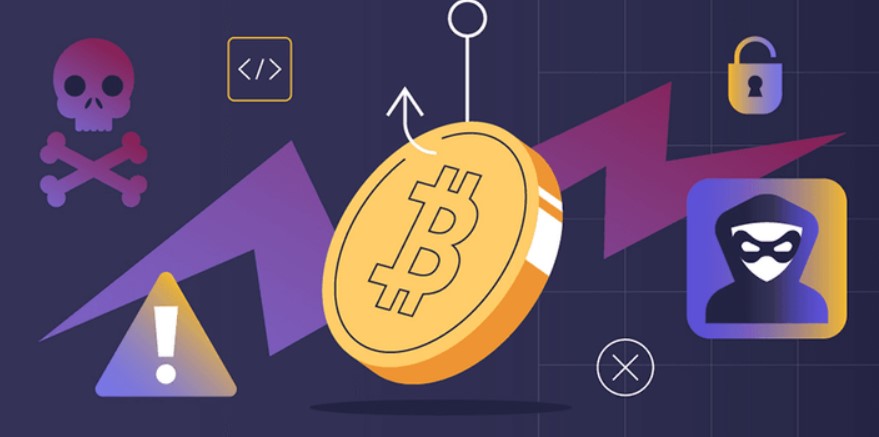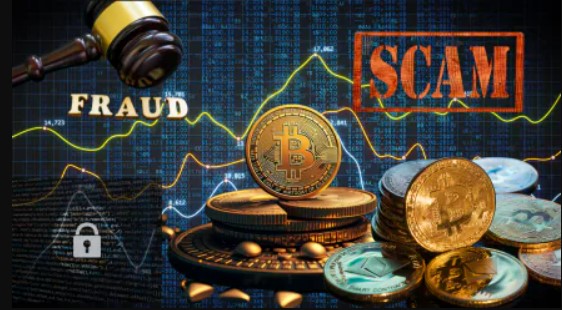CatyCoins.com Scam Review -A Dubious Online Trader
CATYcoin (also seen as “Catycoins.com” / “catycoin.com”) is a cryptocurrency project, styled as a token or meme coin with promises of community governance, utility, and/or adoption. The branding is animal / cat themed. The website claims certain benefits, marketing language about adoption, tokenomics, etc. It is pitched to attract people who are curious about meme coins or speculative crypto investments.
It presents itself like many crypto startup / token websites do: flashy graphics, promises of potential growth, maybe some token features such as “burning LP tokens,” “no buy tax,” or “low fees” in order to attract holders. It also claims community engagement or decentralized governance. That’s the public face.
Key Warning Signs & Red Flags
But when you peel back the layers, multiple risk factors and warning signs stand out. Individually, some may be explainable; together, they form a strong pattern that suggests high risk. Here are the main issues:
-
Regulatory Caution Notices
In at least one jurisdiction (Alberta, Canada), the securities regulator has explicitly put CATYcoin on its Investment Caution List. The advisory states that CATYcoin (including the websites catycoins.com / catycoin.com) is not registered to trade in or advise on securities or derivatives there. That means investors have no regulatory protection, and the regulator is warning people not to engage with it.
-
Ownership & Transparency Issues
-
WHOIS / domain registration details are mostly private. Ownership information is hidden behind privacy or proxy services.
-
There is little publicly verifiable data about the individuals or organization running the project — names, team background, legal entity, etc.
-
Tokenomics and distribution details are vague: claims like “LP tokens burned,” “no buy tax,” or “community governance” are made, but often with minimal supporting evidence or independent verification.
-
-
Speculative / Hype-Heavy Marketing
-
The project emphasizes meme coin branding, “community,” “utility,” etc., with persuasive emotional appeal rather than proof.
-
There are strong marketing assertions (for example of “memability,” “most memeable token,” etc.) and claims about future value, with less focus (if any) on the risks.
-
Some features are touted (e.g. decentralized exchanges, specific chains) but sometimes without clear confirmation that the token is actually listed or functional in those contexts, or enough liquidity.
-
-
High Supply, Inflation Risk, and Tokenomics Red Flags
-
Very large total or circulating supply: such mega supplies are often associated with steep inflation risk or difficulty maintaining price.
-
“Burning LP tokens” or “locking liquidity” are claimed; however, in many similar token projects, these mechanisms are either weak, temporary, or controlled in ways that allow the founders or insiders to manipulate outcomes.
-
No detailed or verifiable transparency about token distribution (how many tokens are held by founders, how many by public, how many locked/unlocked, vesting schedule, etc.).
-
-
Low Trust from Web-Safety / Scam-Check Tools
-
On Scamadviser, catycoins.com shows a very low trust score. Indicators include hidden WHOIS (domain owner privacy), relatively recent registration, etc. These tools see many pieces that raise concern.
-
On other “trust rating” or “site risk” tools, there are consistent warnings or cautions to “use extreme caution.”
-
Public user reports mention potential risk or concern that this is not fully to be trusted.
-
-
Community Feedback, Reviews, and Allegations
-
There are threads in online forums and Reddit where people describe encountering issues, fear about being unable to sell tokens or liquidity being locked, or feeling the project does not live up to promises.
-
Some people say that the project is a hype-driven token with little substance.
-
Because meme coins frequently involve speculative risk, many of these community discussions focus on whether what’s being promised is realistic (often concluding it is not).
-
-
Relative Lack of Independent Verification
-
There is little evidence of formal audits of the smart contract(s). No strong independent proof of security audits, especially concerning liquidity, contract ownership, or whether contract ownership has been renounced.
-
Token tracking sites (e.g. for verifying transaction history, distribution among wallets) are not clearly or transparently referenced.
-
No well-known partnerships or verifiable utility examples beyond marketing materials.
-
Why These Red Flags Combine to Raise Risk High
To understand risk, it helps to see how these warning signs reinforce each other and what the typical outcomes are when these signals are present. Here are some of the dangers:
-
Without a regulatory registration or oversight, there is no guaranteed protection of funds, no legal requirement for truthful disclosure, and no fallback if the project fails fraudulently.
-
Hidden ownership + vague tokenomics = potential for insiders to manipulate liquidity, to pull large portions of tokens, or to exit (sell) without warning. In many crypto “rug pull” cases, these are exactly the structural weaknesses exploited.
-
Huge supply + meme coin branding + speculative promise = high possibility for price volatility, pump-and-dump behavior, or declines where early buyers lose value.
-
If contract ownership is not renounced, or LP tokens are not truly locked, the developers may retain power to change the contract, mint more tokens, withdraw funds, or manipulate token-rules.
-
Community hype and marketing can encourage people to buy in quickly without doing full due diligence, which may lead to losses for “late comers,” especially when liquidity or chain listing is weak.
Counterparts: Things That Seem Less Bad (But Often Don’t Offset the Risks)
There are some features which might seem less concerning, or which projects like these sometimes cite to build credibility. But in this case, they don’t necessarily serve as proof of safety or strength:
-
The website uses HTTPS (SSL), which protects data in transit, but that is very common even among scam or risky crypto token websites. It’s necessary, but far from sufficient.
-
Some “trust tools” may give average or modestly positive ratings in certain respects (e.g. site uptime, server location, domain age), but these tools often weigh many small factors and do not capture deeper contract or financial risk.
-
The “community” branding is appealing and can be genuine in some projects; but community hype is not a substitute for verifiable fundamentals.
Specific Regulatory / Jurisdiction Notes
-
The Alberta Securities Commission has placed CATYcoin in its “Investment Caution List,” which means that from the regulator’s perspective, it is not operating under required legal authority in that jurisdiction. Investors there are specifically warned not to deal with it.
-
That regulatory caution is a strong signal: it’s not just users expressing doubt; it’s official agencies stating that the project is operating outside their legal frameworks.
What People Might Experience (Based on Public Reports)
Combining what is known plus what similar projects do, here are some experiences people might have if they interact with CATYcoin / catycoins.com:
-
Early buying of the token might seem to go smoothly; the token may be visible on a decentralized exchange, maybe with initial liquidity.
-
Prices may fluctuate a lot, often driven by hype rather than fundamental utility or adoption. Anyone holding hoping for steady returns may find high volatility.
-
Attempts to sell or withdraw may run into issues: weak liquidity, high slippage, possibly inability to sell in certain marketplaces without losing significant value.
-
Transparency and support may be weak: support channels may be unresponsive; information about who is behind things may be vague; promised utilities (staking, burns, governance) may exist more in promise than practice.
-
Marketing will likely stress community and potential gains, often pushing urgency (“buy now,” “don’t miss out”) more than educating about risk.
Overall Judgment
Putting all this together, here’s a reasoned assessment:
-
CATYcoin / catycoins.com exhibits many traits commonly associated with high-risk or potentially fraudulent crypto projects: hidden ownership, regulatory warnings, speculative marketing, weak transparency, potential liquidity and token-supply risks.
-
The regulatory caution from Alberta is significant: a formal warning by a securities authority is more serious than mere rumor.
-
While there is no absolute proof publicly that it has yet committed a “rug pull” or similar, the structural weaknesses make it plausible. The balance of probabilities leans toward “this is not a reliably safe investment.”
-
For people who invest, the chance of losing most or all value appears substantial, especially for those buying late, or those unable to closely track and understand the token mechanics, contract ownership, and liquidity.
Final Thoughts & Takeaway
If I were summarizing where things stand with CATYcoin, here’s what I’d say:
CATYcoin is best seen as a speculative, high-risk token, and very likely unsafe for those who cannot afford to lose what they invest. The red flags are numerous, and several official warnings exist. It has many aspects that are typical of projects that either fail or behave in ways harmful to token holders.
For someone considering buying or interacting with it, it would make sense to treat it more like a gamble than an investment. One should proceed with extreme caution, ideally after doing more independent verification: checking smart contract audits, seeing if contract ownership is renounced, verifying liquidity, seeing real user reports in your jurisdiction, etc.
Report CatyCoins.com Scam and Recover Your Funds
If you have lost money to CatyCoins.com Scam, it’s important to take action immediately. Report the scam to Jayen-consulting.com, a trusted platform that assists victims in recovering their stolen funds. The sooner you act, the better your chances of reclaiming your money and holding these fraudsters accountable.
Scam brokers like CatyCoins.com continue to target unsuspecting investors. Stay informed, avoid unregulated platforms, and report scams to protect yourself and others from financial fraud.
Stay smart. Stay safe.






